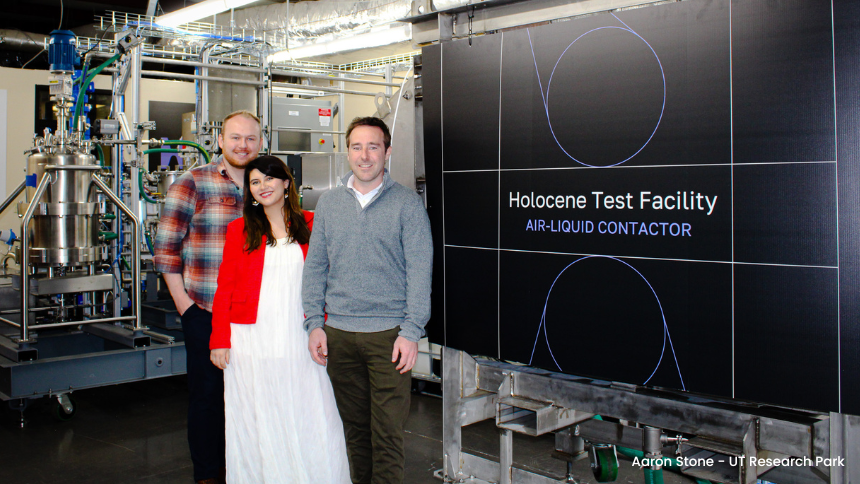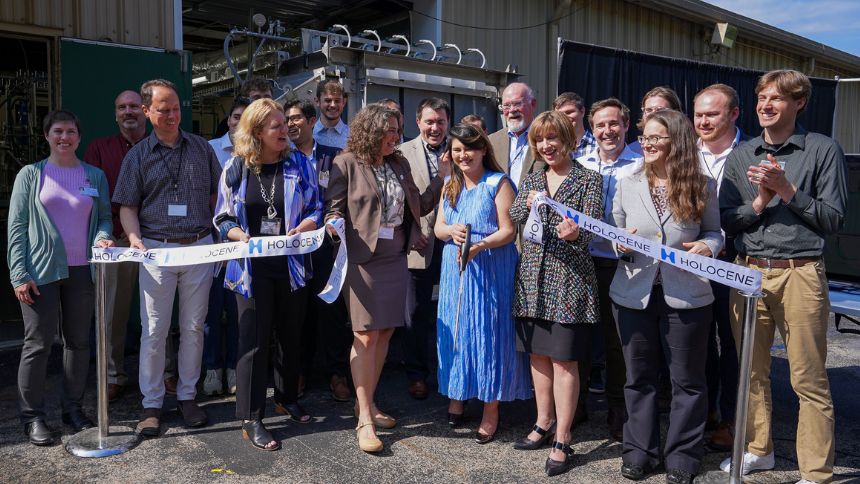
Holocene signs record-setting direct air capture purchase agreement with Google
Google's partnership with Holocene aims to address one of the key barriers facing DAC technologies: the price tag.
On Tuesday, Google announced a new deal to purchase carbon removal credits from direct air capture (DAC) provider Holocene, a local Knoxville-based start-up. Google said they will purchase carbon removal credits for $100 per ton, for delivery by the early 2030s.
“We’re committed to doing our part to decarbonize the global economy and reach our goal of net zero emissions across our operations,” Google officials said in a press release. “Carbon removal technologies are key to that goal. Partnering with Holocene to reach this milestone price will be a meaningful step toward advancing the viability of DAC as a tool to fight climate change.”
Holocene is a Knoxville success story, led by Anca Timofte as the Co-Founder and Chief Executive Officer. Her company participated in the Innovation Crossroads program at Oak Ridge National Laboratory (ORNL), the Spark Incubator at the University of Tennessee (UT) Research Park at Cherokee Farms, and most recently was named as a Breakthrough Energy Fellow portfolio company.
The company just announced the opening of its new, expanded lab space in Knoxville on May 8 this year (see teknovation.biz article).

Direct air capture (DAC) uses chemical or physical processes to extract carbon dioxide (CO2) directly from the air, after which it is stored permanently underground or re-used in products. Experts agree we will need to collectively remove billions of tons of CO2 from the atmosphere annually by 2050 to halt climate change, and DAC could be an important part of the solution.
According to Google’s release, in the current technological climate, no DAC plant is delivering more than 2,000 tons of carbon removal credits per year. And while the technology is improving, prices remain in the many hundreds of dollars per ton of CO2 removed. For more companies and governments to invest in DAC projects costs need to fall dramatically.
Google’s partnership with Holocene aims to address one of the key barriers facing DAC technologies: the price tag. While Holocene’s technology is still in the early stages of development, it has the potential to bring down costs significantly over time.
Google said the deal with Holocene was strategic. Notably, Holocene takes an innovative approach to DAC, combining elements of both liquid and solid-based systems, which has a high potential to reduce costs for this difficult physical challenge over the long term.
Google will provide financial support upfront while making a long-term commitment to accept credits from Holocene’s lower-cost facilities, scheduled for delivery in the early 2030s. Finally, Holocene’s projects qualify for the U.S. government’s 45Q tax credit on top of Google’s payment, which incentivizes investment in DAC by providing suppliers $180 per ton of carbon removed.
Through this deal, Holocene will capture and store 100,000 tons of CO2 by the early 2030s (the equivalent of roughly 20,000 gas-powered vehicles driven in one year) and further accelerate the development of their technology. While this is significantly more CO2 than has been removed and stored by DAC solutions to date, it’s nowhere near the volume of carbon removal that is needed on a planetary scale. But achieving lower cost DAC at a small scale is a first step towards giving the carbon removal market confidence that reaching millions, and even billions, of tons per year could be possible.
Like what you've read?
Forward to a friend!

